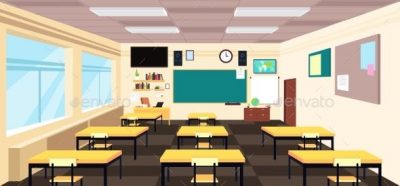Due to the Covid-19 Pandemic, the disruption to learning for all levels of education has been extreme. Teachers had a hard enough time attempting to provide a quality education for too many students, in too-small classrooms before the virus. What they are experiencing now is a far cry from an effective solution for learning. Distance instruction has been difficult at best and nearly impossible in some instances. School districts around the country and around the world spent too much time dragging their feet at the end of the last school year believing that the pandemic would end faster and things would return to normal rather than preparing for more remote learning, They were wrong!
Now that a new school year is well underway, some students are returning to classrooms for in-person instruction, but those are limited numbers. And now with a serious second wave of Coronavirus taking hold, many classrooms that had opened up are returning to remote learning. Too many school districts remain unprepared for the challenges of effectively teaching through online technologies.
Like any other job, teaching from home, online, is a balancing act of merged home and work lives filled with distractions on both ends of the connection. Teachers working with low income and minority students who don’t have the same access to computers and internet connections struggle to provide a quality educational experience. Even in affluent communities where students have access to the internet and home computers, not all schools, teachers or students are prepared for this new normal.
Let’s be real. The idea of trying to keep the attention of 30 or more students – regardless of grade level – all logged in at the same time from different locations is tantamount to herding cats. Parents see the trouble that the teachers are having keeping their children’s attention, but forcing an active child to sit still in front of a computer with so many distractions is difficult at best. In-person learning is no picnic either, but distance learning in the age of Covd-19 takes that difficulty to another level.
While primary and secondary schools were hit hard, colleges and universities have also been severely impacted. In many instances, campuses remain closed. Around the world there have been attempts to resume in-classroom learning, but large spikes in virus cases have necessitated the dependence on distance learning. While online coursework has been available and used effectively for a long time now, there’s a certain irony from recognizing how unprepared these bastions of higher learning have been to provide quality distance learning scenarios for the majority of their students.
And it doesn’t matter if you’re discussing elementary, secondary or college level learning, another shortfall in my opinion is the lack of cooperative participation from local and regional cable and satellite television and internet service providers. These companies are in the best position to level the playing field when it comes to providing equal and inclusive access to distance learning for all. Even without satellite or cable service, most TV stations today have at least one subchannel that can be employed for helping local schools effectively reach more of their students. It annoys me how few of these providers have gone the extra mile to ensure that all students within their service areas are given the connections needed for distance learning. These companies are in the best position to provide equal access regardless of economic strata so that all students can access and utilize distance learning tools to their fullest potential. And I would go so far as to suggest that local municipalities should demand that these service providers make their connections available to everyone in their communities – whether wired or wireless – so that all students can continue actively in their learning without concerns for how they will connect to their teachers, assignments and classmates.
I would even go further and suggest that it might be in the best interest of our country for the FCC to mandate internet and cable companies provide these services for free or the lowest possible fees during the pandemic to best facilitate the continuity of all students’ educations. The promise of internet for all has too long been discussed, and there is no better time than now for these stake holders to come together to make that promise a reality.
In the meantime, it will take a lot of work on the part of all communities, including parents, students and educators, to stomp down on the virus. Covid-19 vaccines are on the horizon but it will be a while before they are widely distributed. For now, social distancing and masks remain the best and safest protection for all teachers and students. Hopefully, once a vaccine is available and the infections rates drop low enough, a return to classroom learning should be possible. On this fact I am optimistic.
The technology for distance learning is widely available but it will take the cooperation of local and regional municipalities, their leaders, broadcasters and service providers to ensure equal access for all students regardless of grade level or economic circumstances. If this interruption to the education of our young continues to be poor and ineffectual, it will take too long for them to catch up to their appropriate program completion levels. It is bad enough that students are missing out on the social aspects of being in a classroom, learning to work collaboratively, and building friendships that will potentially last a lifetime. But they are also missing out on so much of the learning they’ll need in their pursuit of short and long term goals.
Here’s hoping all students can return to in-class learning again, soon. Hopefully, never again to see their education interrupted.

